Emerging security risks due to energy transition
Research question
- What are new safety risks in the (petro)chemical industry as a result of energy transition, such as electrification, hydrogen, wind, solar and batteries, and/or as a result of phasing out fossil fuels?
- What innovations are needed for risk management?

Code: RCA 2022-43
Status: completed
Update: June 2023
Background
All developments and new techniques in the context of energy transition lead to new process safety risks and require (new) control measures and new safety concepts (standards) for the industry. To continue working safely, people in the industry must learn to deal with these changes. This is not always easy. It requires time, attention and commitment from safety professionals and supervisors. It is important to identify opportunities for industry and how risks can be managed.
New risks due to energy transition
With energy transition, existing techniques for generating energy will be replaced by other, relatively new techniques or methods. Electricity will be used more frequently and far more extensively as a sustainable source of energy in the process industry, for example as an alternative to stoves currently fired by fossil fuels or as a source of energy for product separation. Another development is capturing CO2 and using it as a raw material for making new chemical products or fuels for alternative energy generation. Other developments in energy transition are underway in the areas of energy generation, storage, transport and distribution, such as with regard to hydrogen and other renewable energy sources, such as wind (turbines), solar (panels) and geothermal energy. All these developments and new techniques lead to new process safety risks and require (new) control measures and new safety concepts (standards) for the industry. To continue working safely, people in the industry must learn to deal with these changes. This is not always easy. It requires time, attention and commitment from safety professionals and supervisors.
About electrification
Electricity may start to be used more often and more extensively as a renewable energy source in the process industry, for example as an alternative to fossil fuel-fired stoves. Electricity could also become more widely used as an energy source in product separation, for example. These new techniques lead to new process safety risks and their risk management, and possibly new safety standards for the industry.
Examples of emerging risks
- Solar: Fire, toxic particles
- Wind energy: fire, fragments (wind turbines)
- Hydrogen:
- Production: fire, explosion, DDT, In Equipment Detonation (electrolysis)
- Storage/transport: bind hydrogen to other substance (e.g., toluene, advent LOHCs)
- Delivery/application: transportation, delivery stations, society (public space)
- CO2 (storage and production of synthetic fuel): Asphyxiation, toxic
- (Super) Batteries (including battolysers): fire, thermal runaway, toxic gas/smoke, explosion, electrocution
- New technology (e.g., gasification, electrolysis): fire, explosion, toxic
- New (biobased) fuels: potential impact in the process industry.
Purpose
This study has the character of an exploration. It explores with the notified parties how they have identified new risks of the energy transition, what these risks are, what is needed to manage them and how the parties deal with unknown or unlikely risks.
Outcome exploration
- There is a need for developing accident scenarios, process plant modification, maintenance, risk assessment
- Increase cooperation and knowledge exchange between (NL) expertise networks, platforms, knowledge centers.
- Create experimentation space, improve MoC processes, update frameworks, standards and guidelines
- Give attention to smaller/new players, public interests and risk communication
Project Management
National Institute of Public Health and the Environment (RIVM).
This project is part of the RIVM activities for the Environmental Safety program of IenW.
Report
Full project reporting is only available to participants - you must request access and login to the SDN program office for this.

